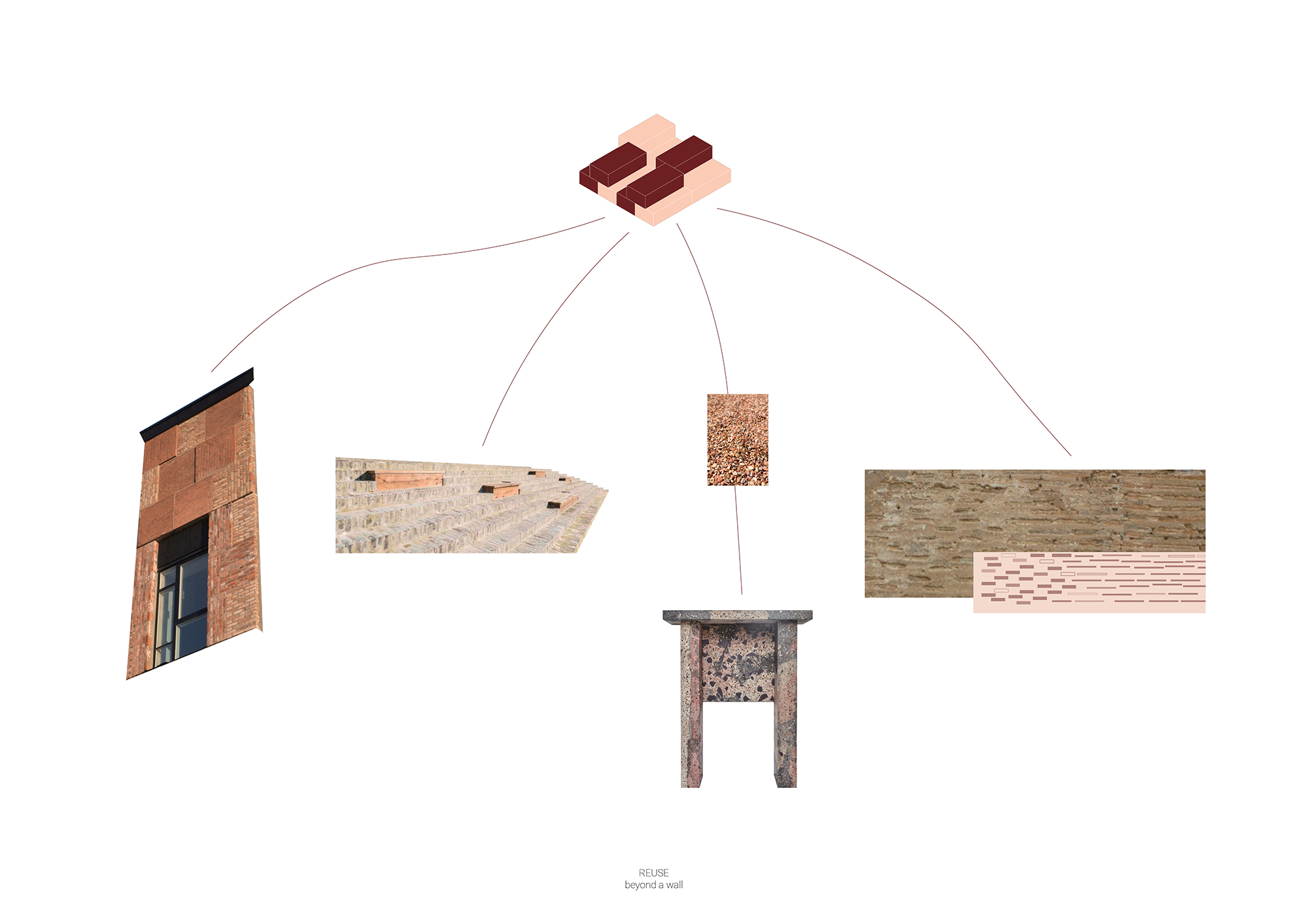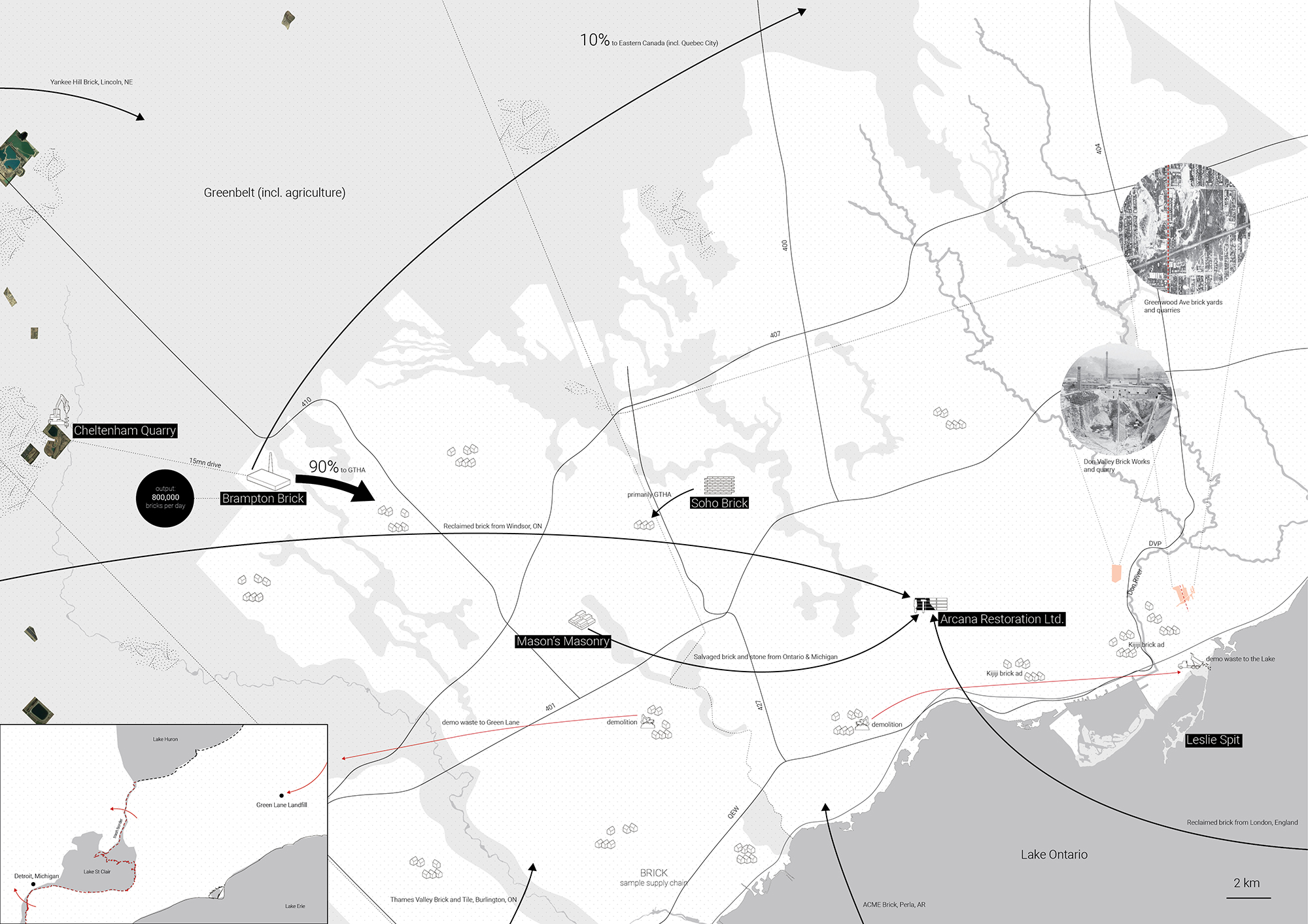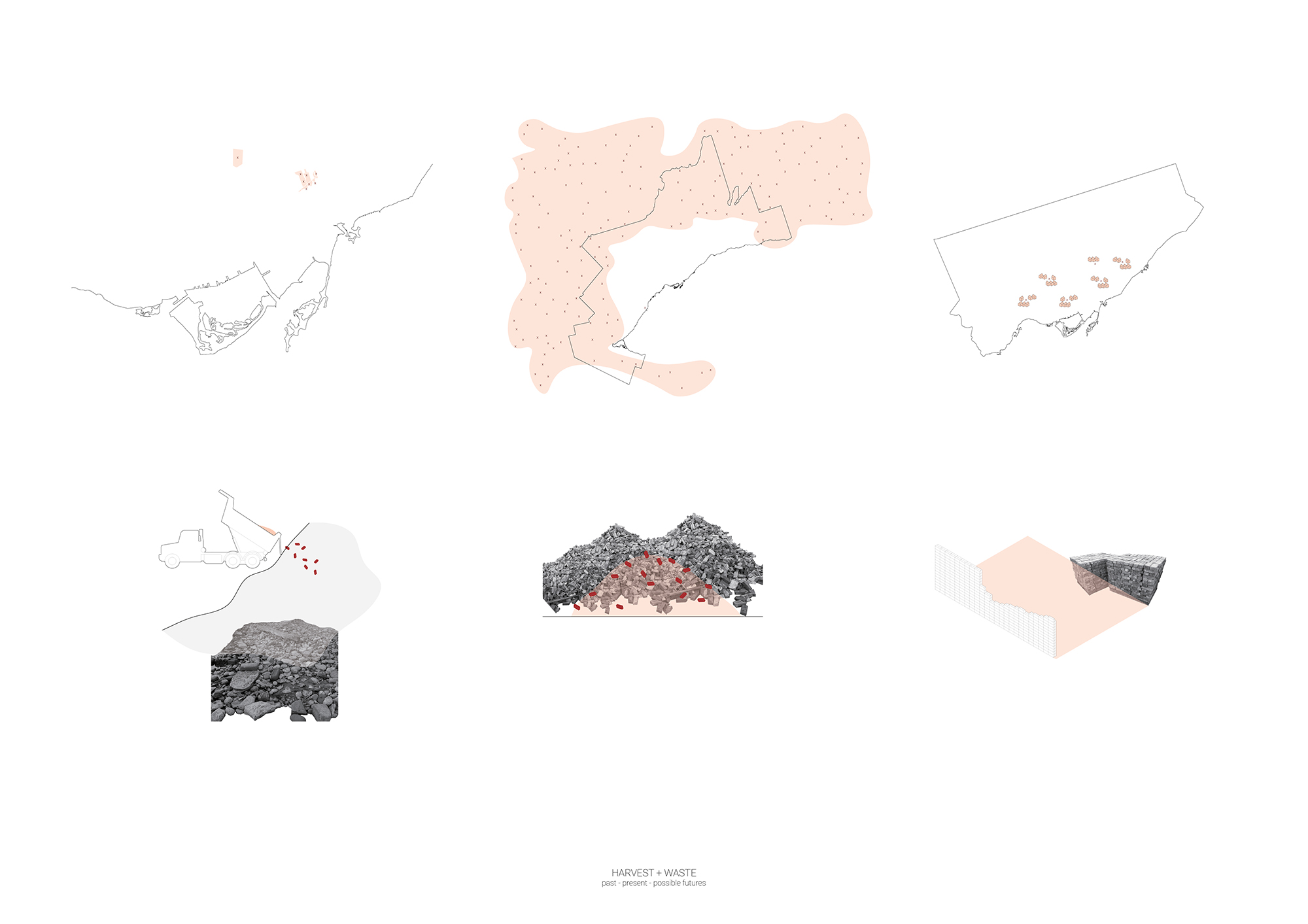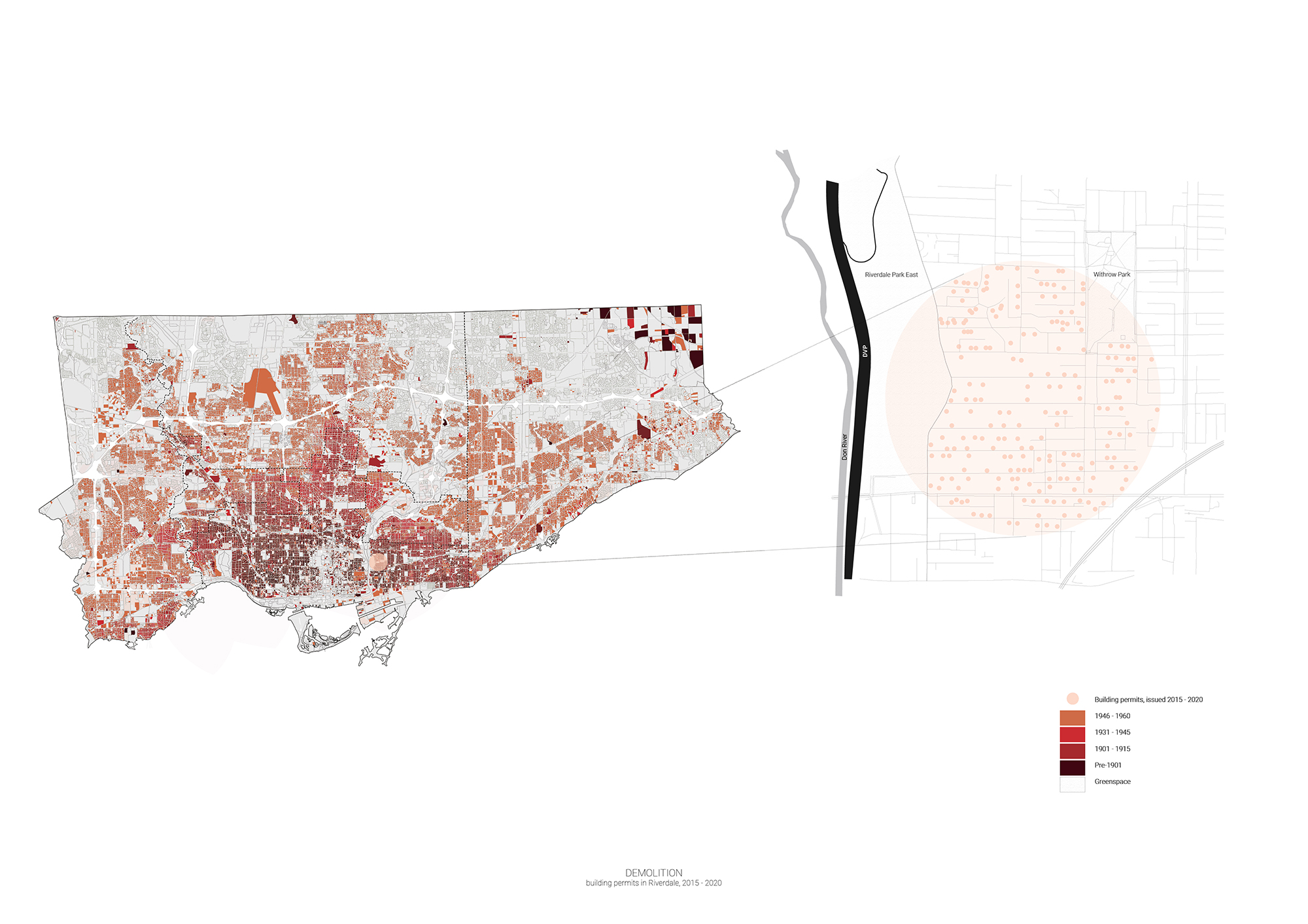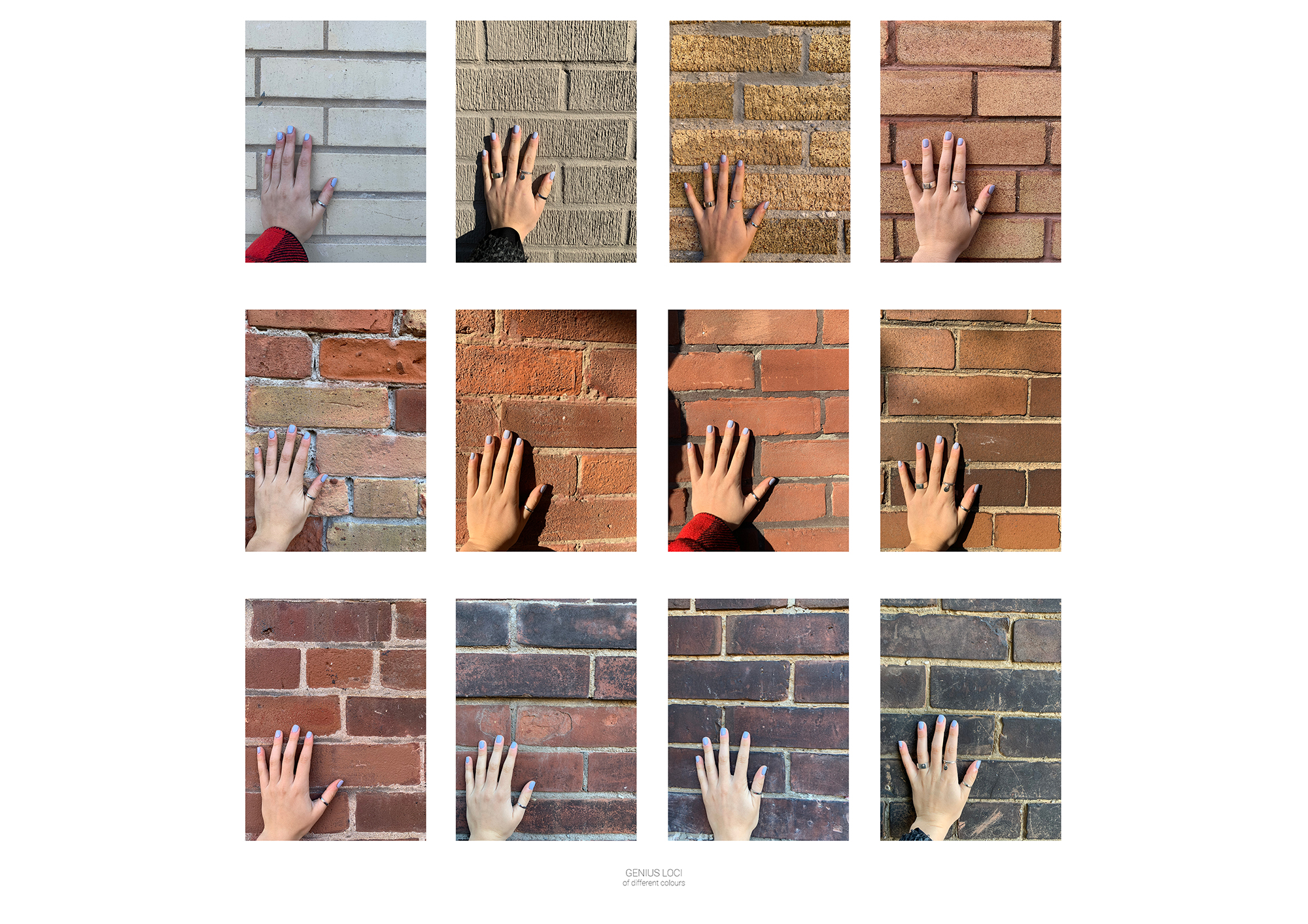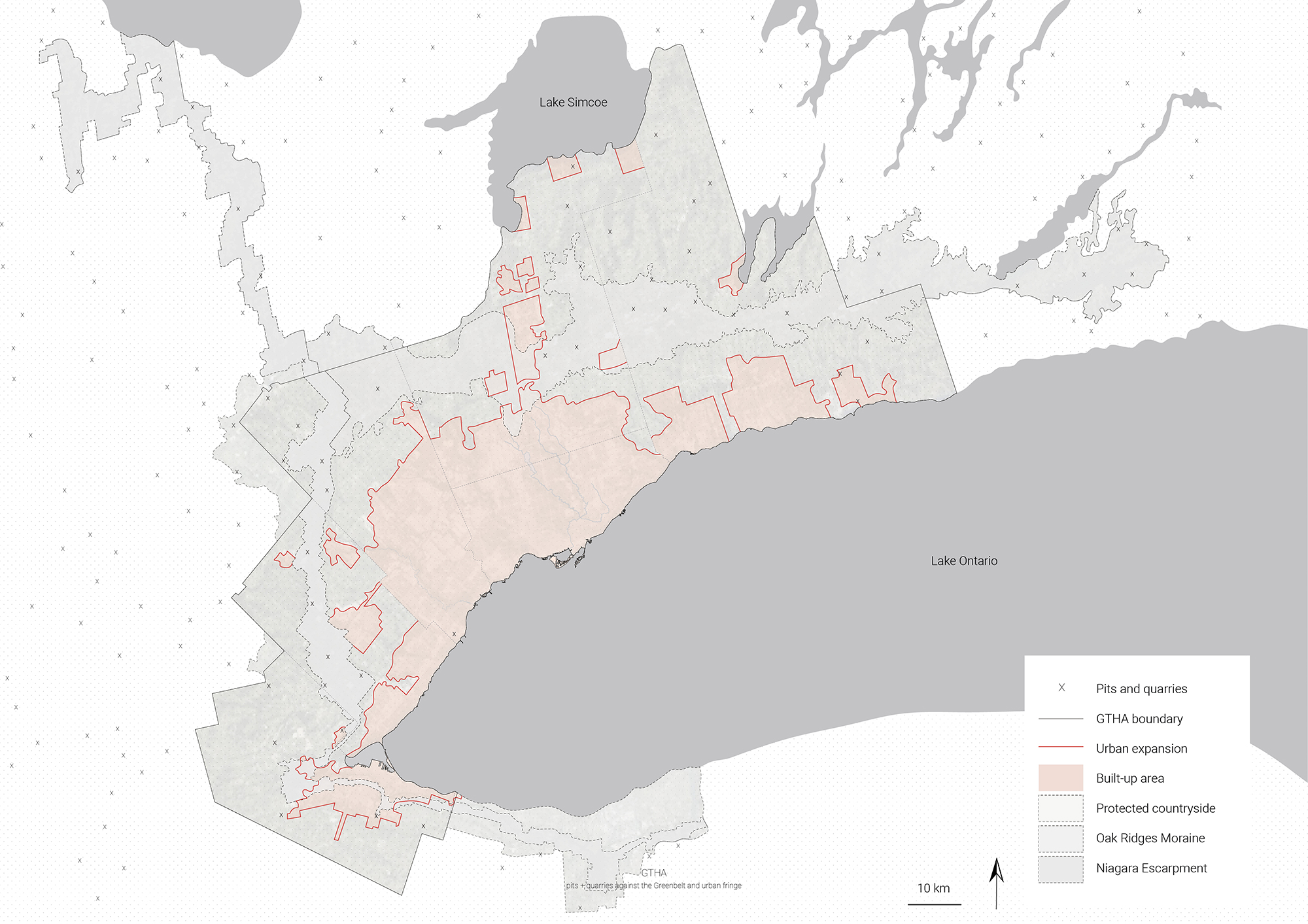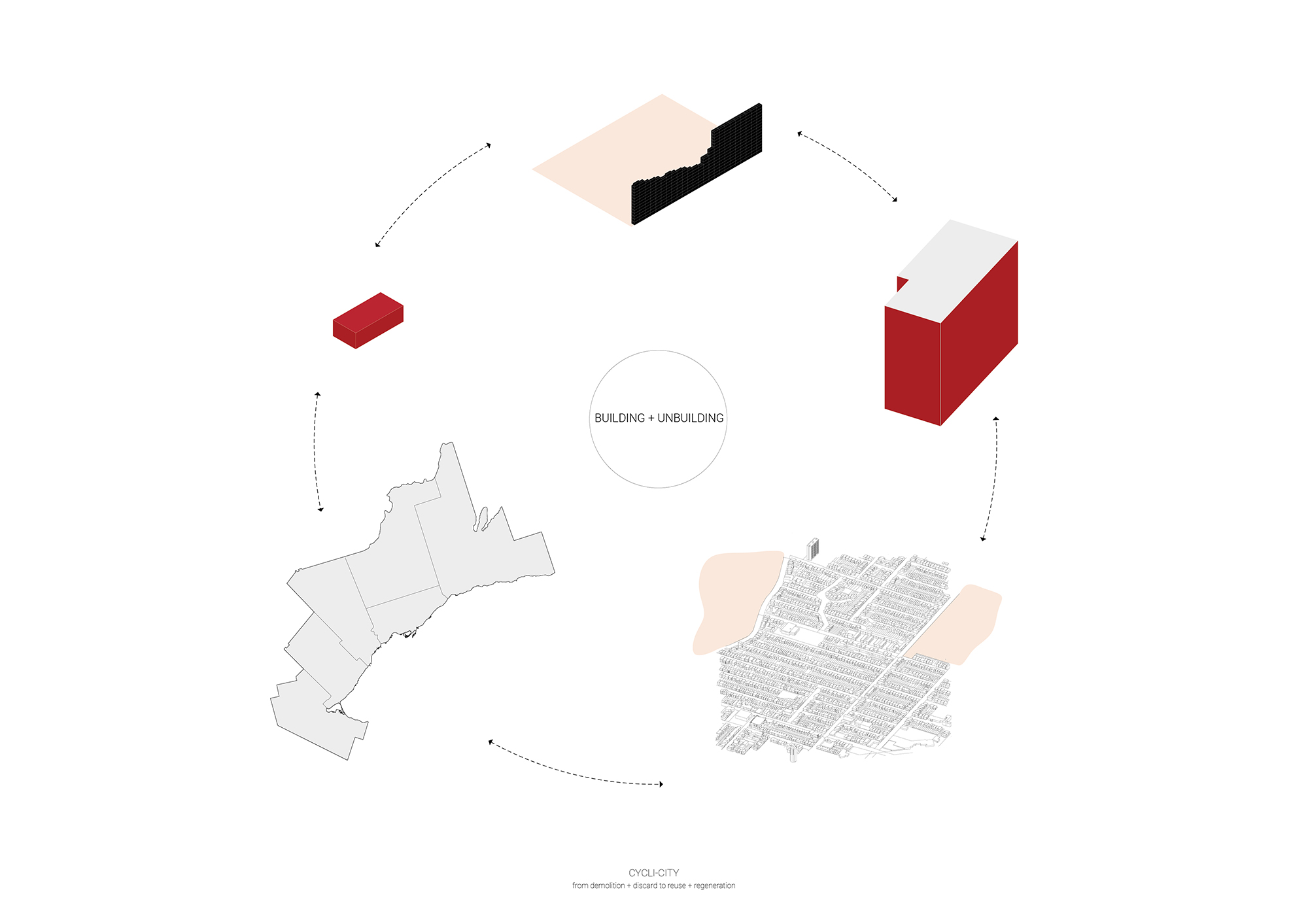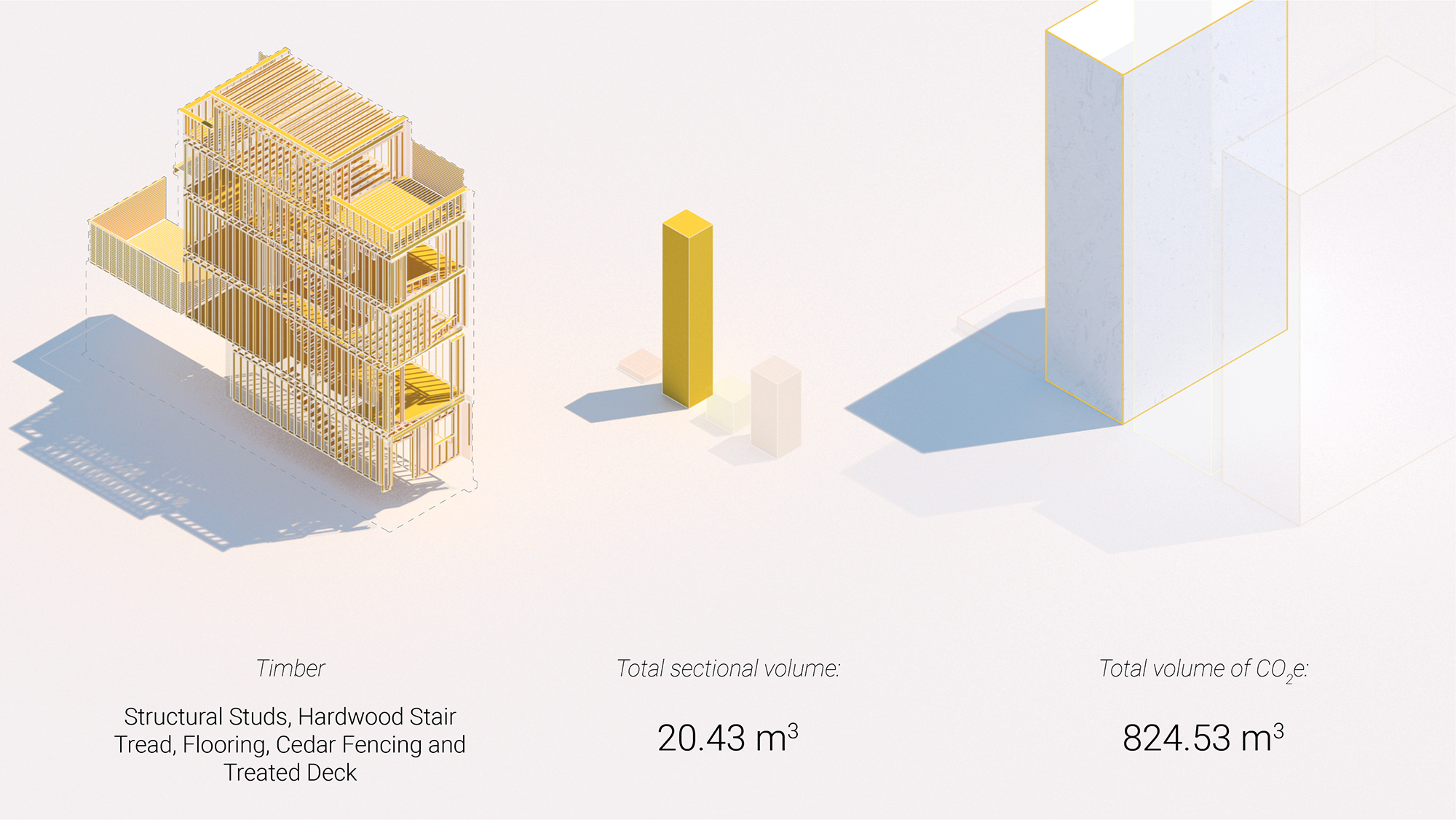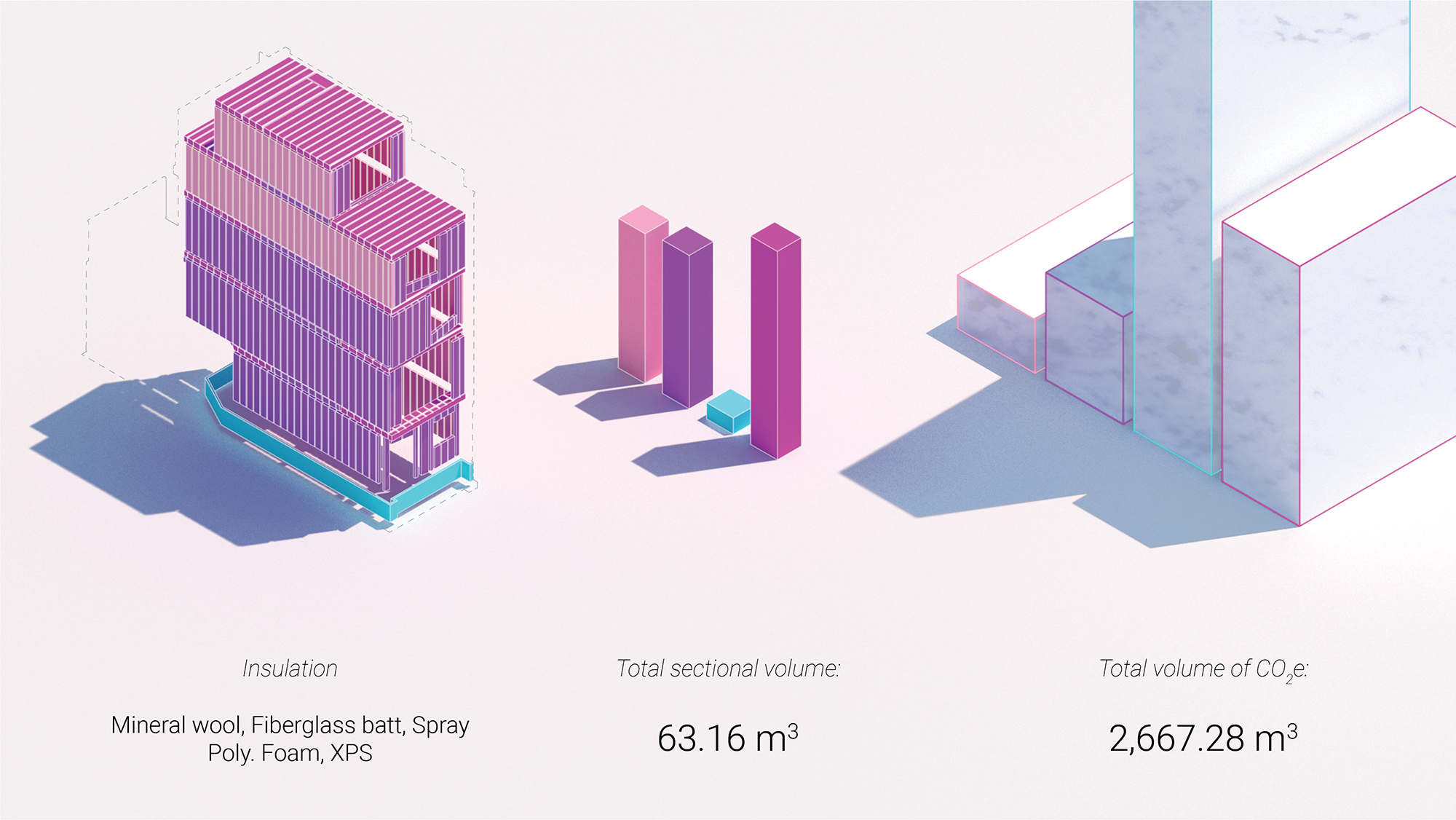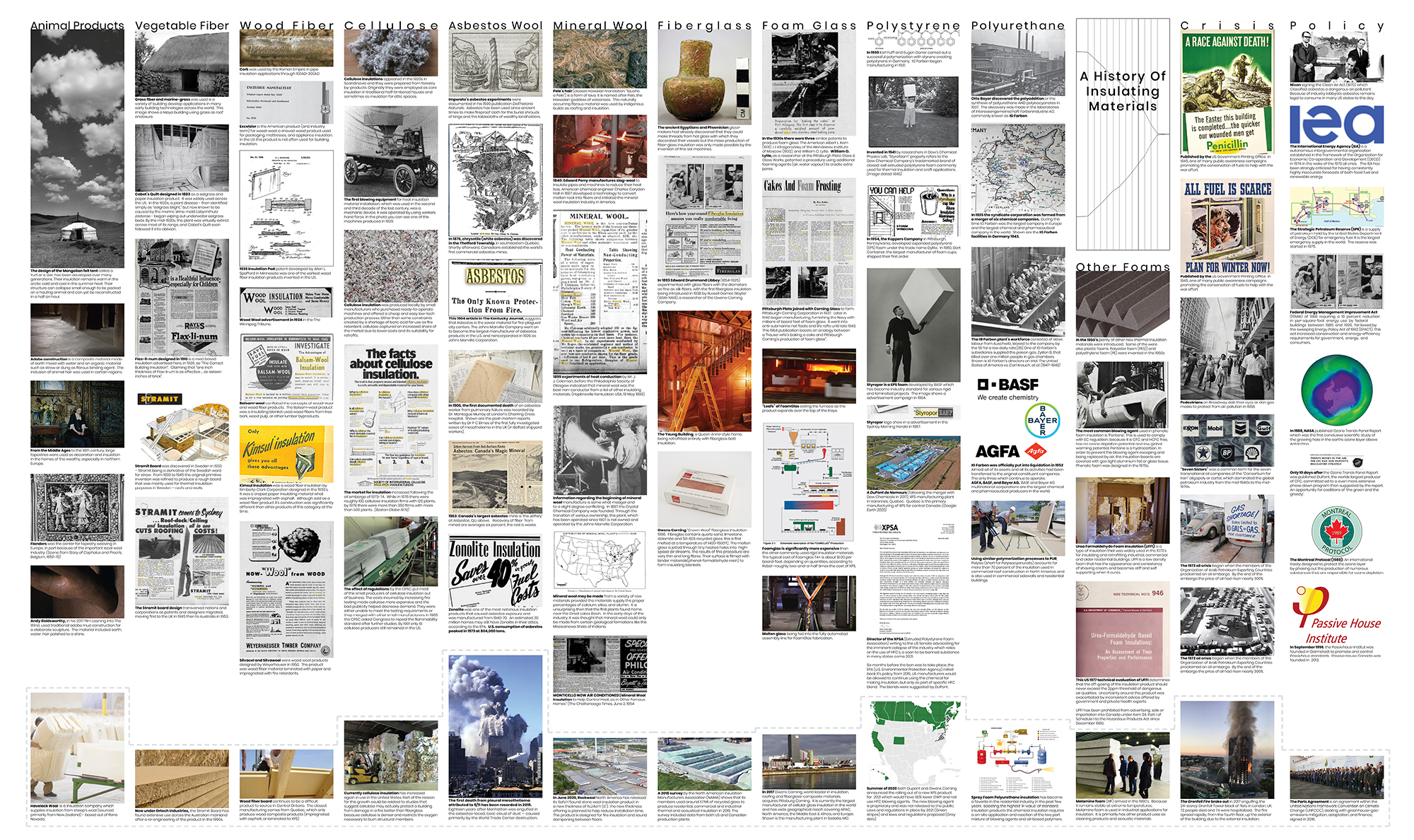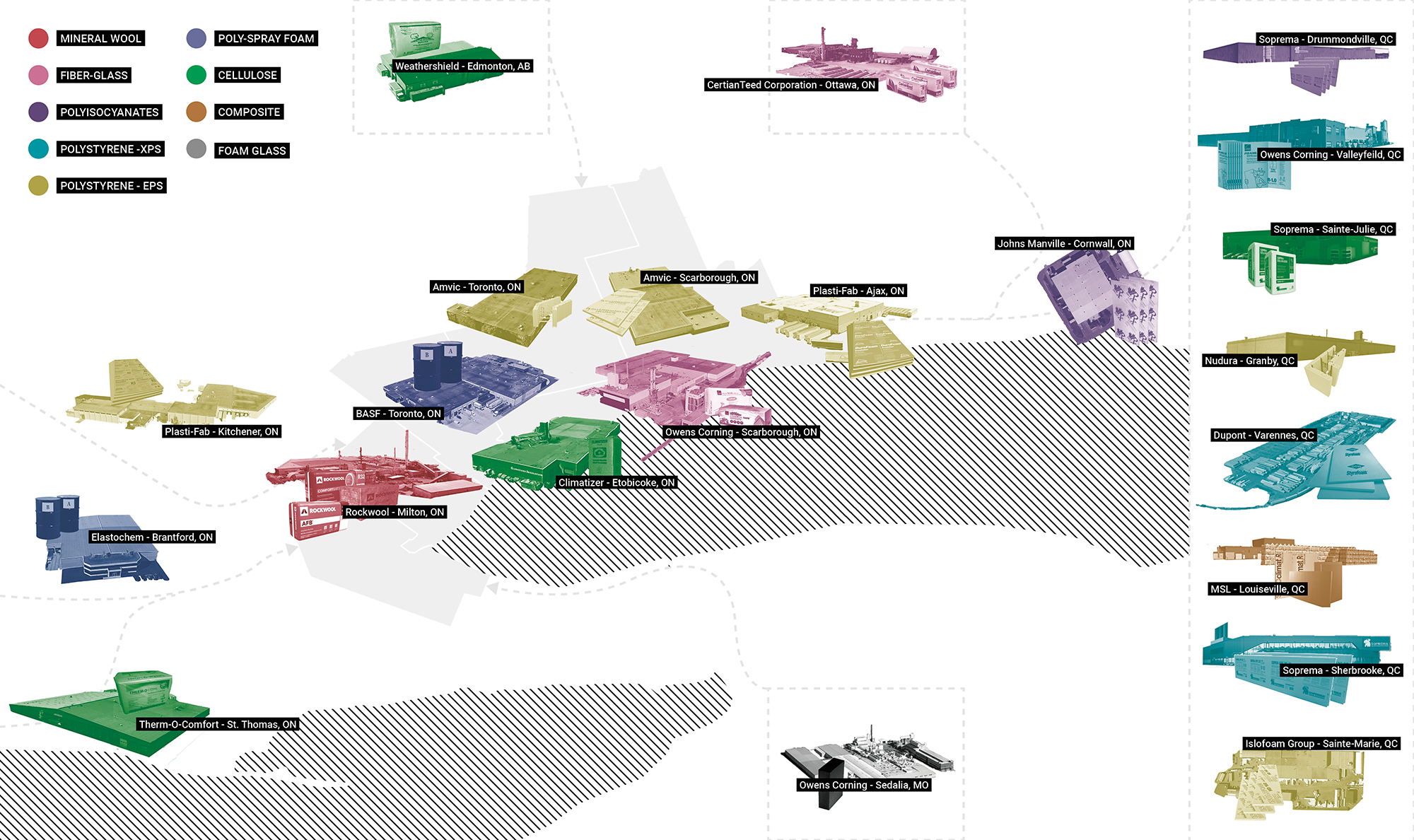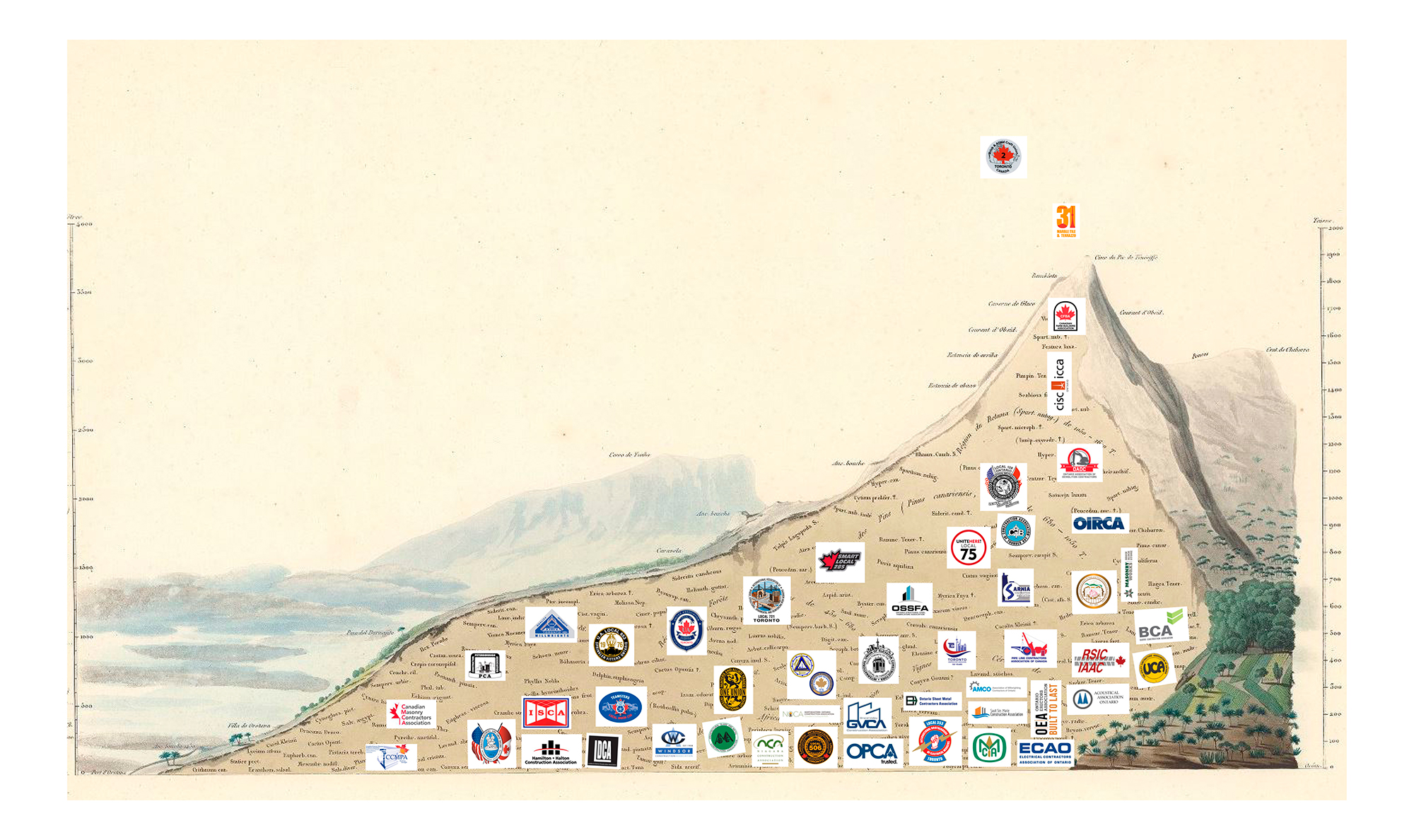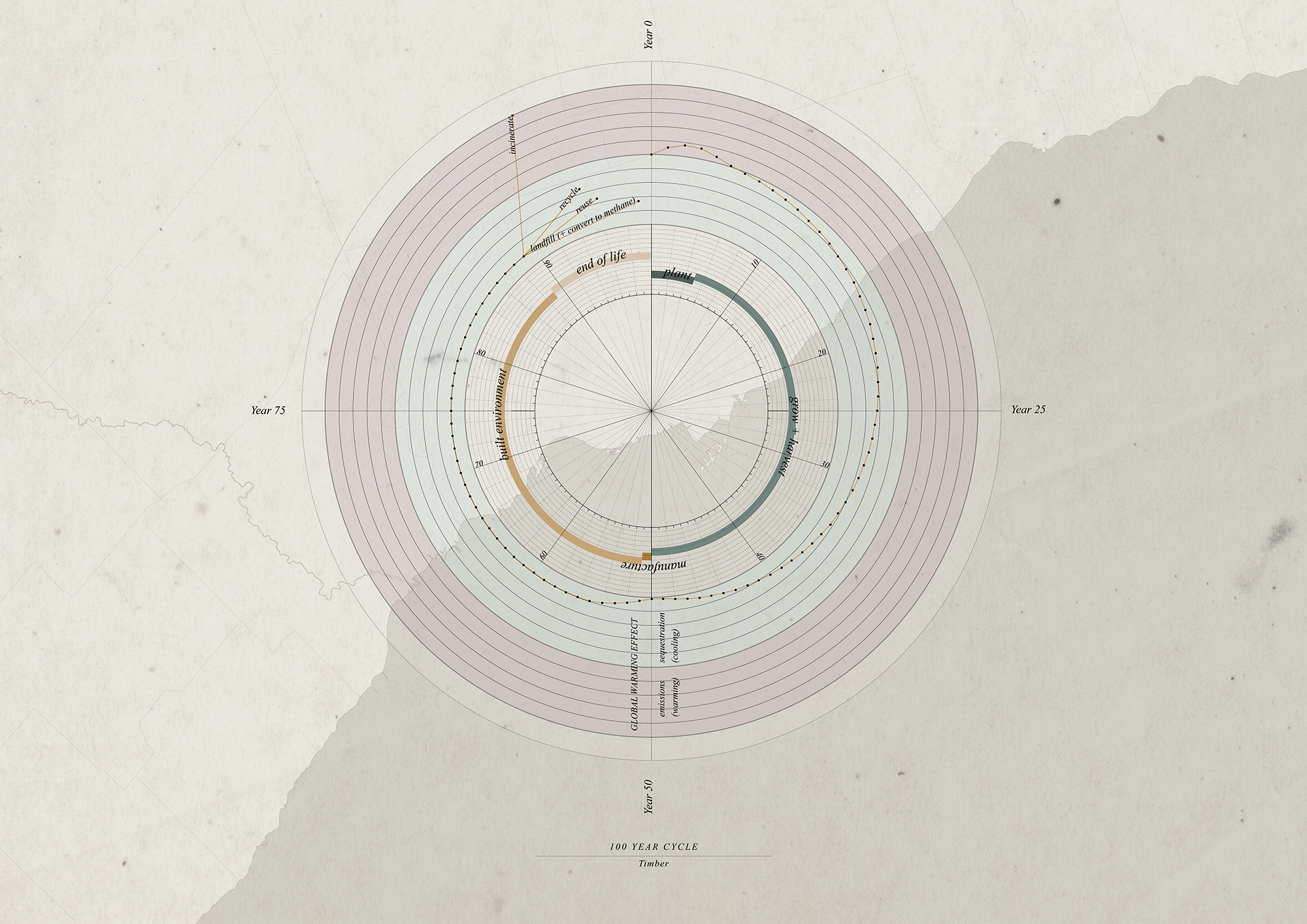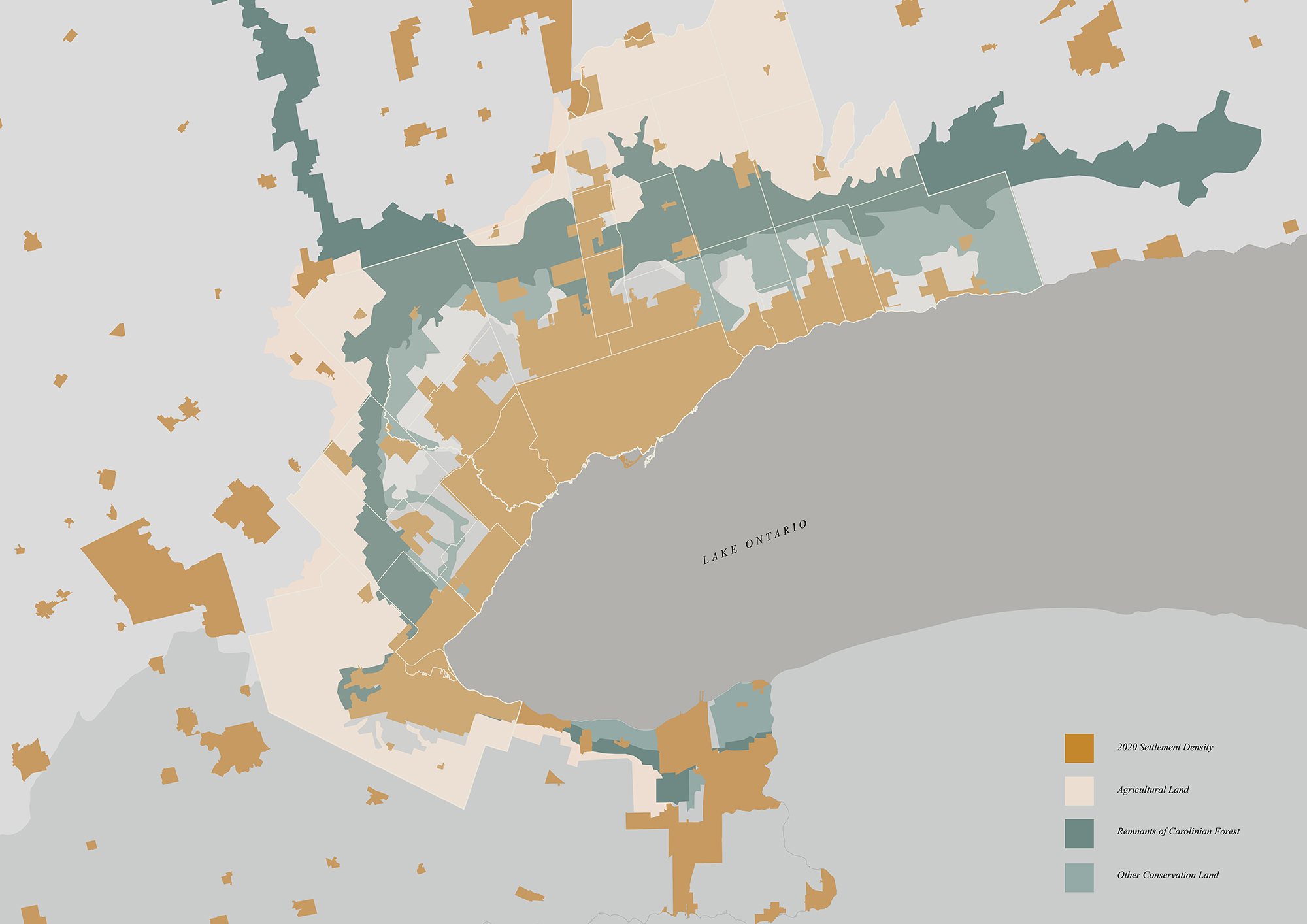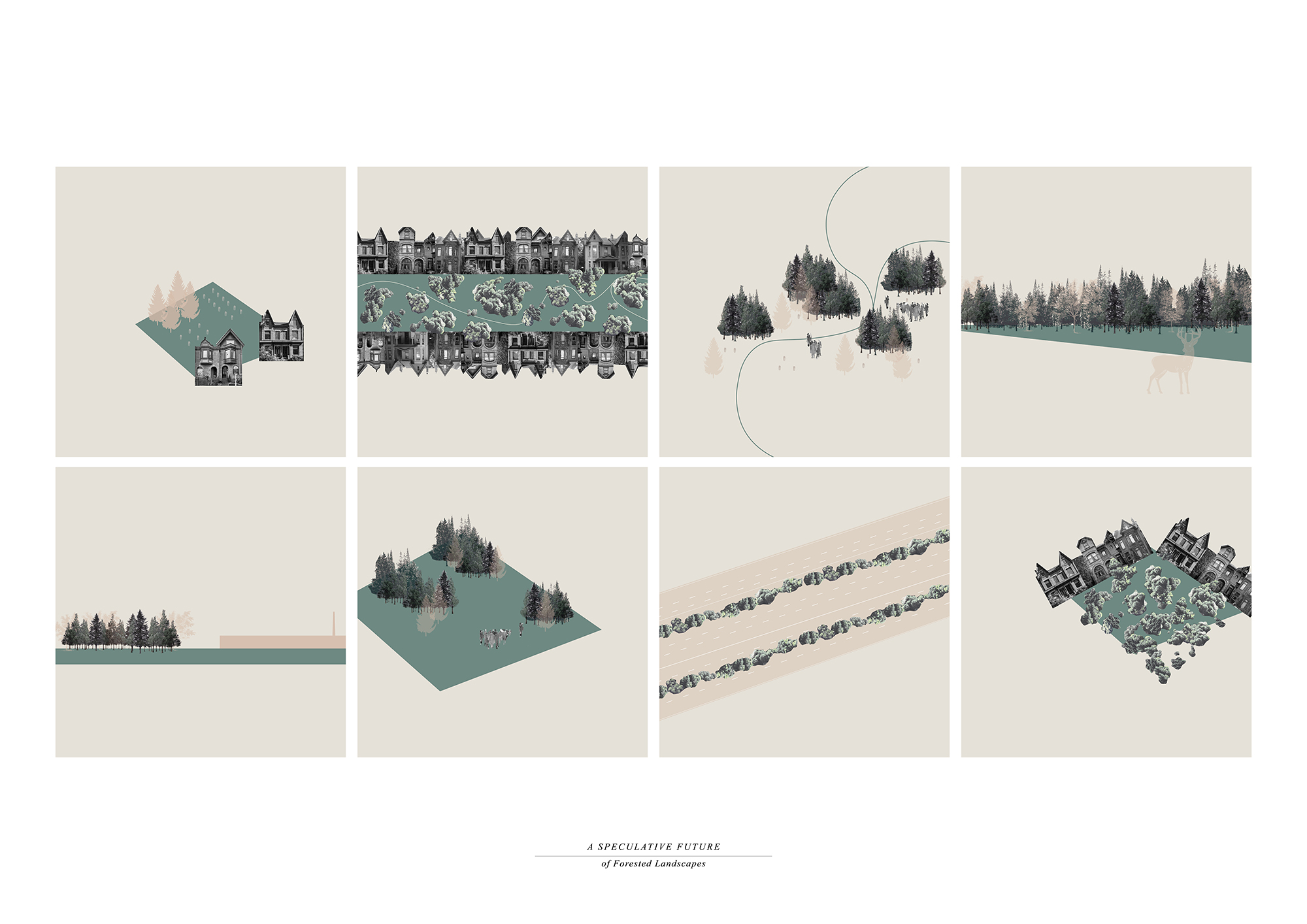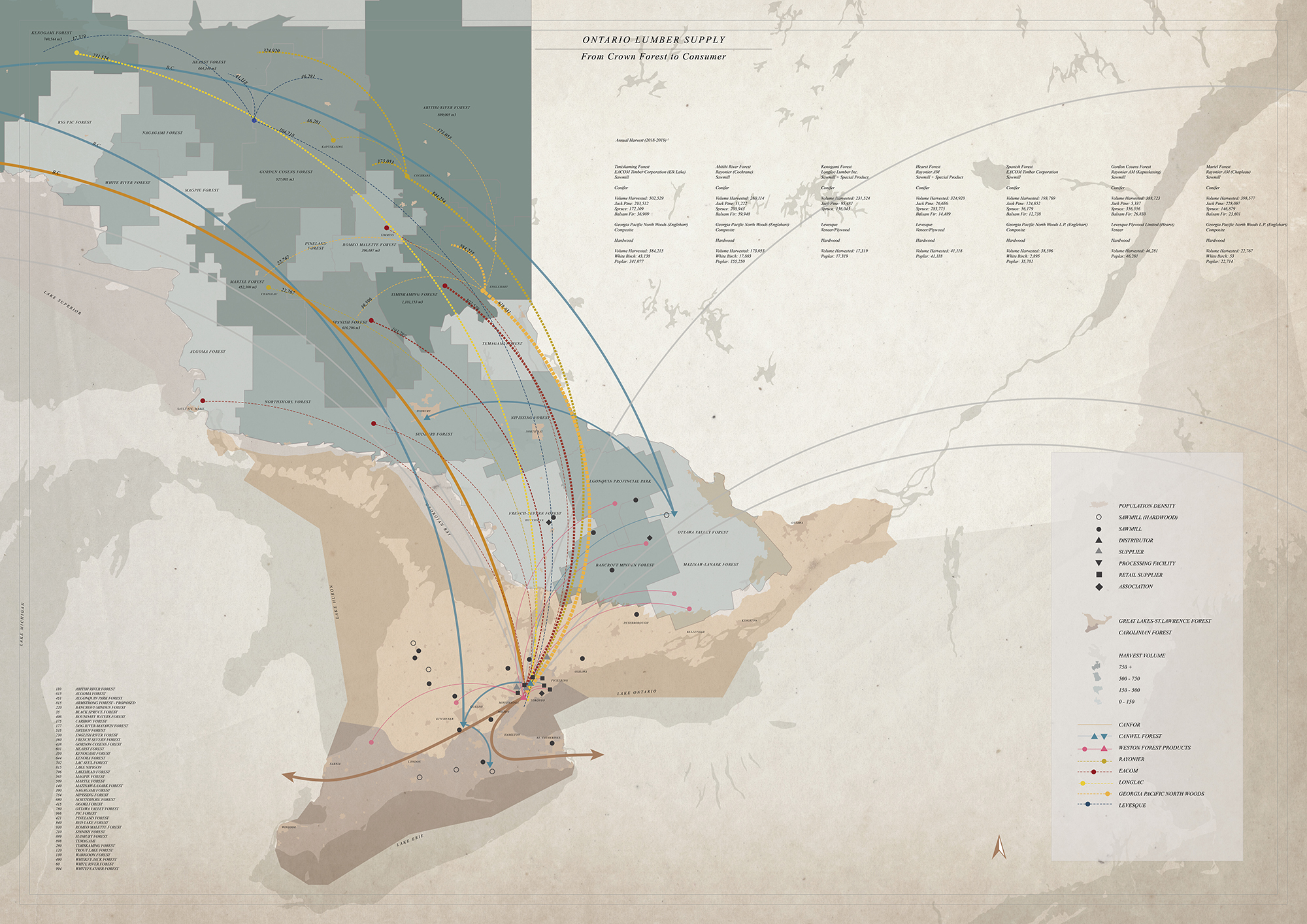Research Studio: Towards Half
In "Towards Half: Climate Positive Design in the GTHA," a research studio taught by Kelly Doran, students were asked to consider the role designers might play in halving the greenhouse gas emissions of homes in the Toronto area. For their final projects, students made proposals for new construction or retrofits that might help the Toronto region achieve that difficult goal.
Juliette Cook
Juliette writes: "The GTHA’s metabolism operates linearly: raw materials are extracted, used in construction, then, when perceived as obsolete, are demolished, and finally are dumped in lakes, landfills, or are transported across borders to locations with lower tipping fees. Architecture and construction must address this unsustainable flow of building materials. Practices of urban harvesting could begin to replace these cultures of extraction, demolition, and waste. Efforts made to reclaim materials from obsolete buildings and use these as resources for other development could help shift Toronto, and its surrounding region, away from the present-day economy of obsolescence, and towards a more closed-loop system, effectively reshaping the linear process into a more cyclical, regenerative model.
Iconic in Toronto’s urban fabric, the humble brick presents itself as an ideal material in an exploration of material reuse. A study of geology, quarries, kiln technologies, issues of labour, the economy, and policies related to the built and natural environments enables a deeper understanding of the forces at play in the material history of clay, shale, and brick. Deconstructing brick and reusing it allows for a reinterpretation of heritage preservation, from preservation at the scale of a building to preservation at the scale of a brick. Salvaged bricks embody not only their share of energy or carbon, but also carry with them an embodied culture, charging whatever secondary use with a richer meaning. How can we reimagine the built environment as a stockpile of resources that have accumulated over time?"
Ryan Bruer
Ryan writes: "The research studio asks the question: how do we halve the embodied carbon of all construction by 2030? My project interrogates the history of insulating products through their material lineage. I find that this post-industrial history is inseparable from the dynamic of crisis and policy, and I identify the ways in which current manufacturing in the GTHA neglects low-carbon solutions in exchange for oil-based polymer products."
Julie-Anne Starling
Julie-Anne writes: "What is the relationship between the distant, invisible environments where raw materials originate and the urban, built environments in which they are found? Uncovering a material’s origin, extraction, processing, transportation, and eventual use reveals the ecological, political, and social intricacies of material practice.
Tracing the material provenance of timber in Ontario reveals a complex past. The relationship between settlement, trade, technology, land use, and conservation are competing forces in the history of timber. These transformations, which continue today, leave us with a heavily converted ecoregion in a fragmented landscape. While the forest edge continues to recede farther and farther from the city limits, forestry is relegated to the periphery. We perceive it as an abstraction, an externality. We are disconnected from the labour, ecology, and processes required to transform a tree into lumber. These analyses urge us to think beyond the finished product, and to think of these materials as extensions of the land, disrupting our preconceived notions of common building materials. Uncovering what we built with a century ago lends clues as to how we might build our future. This is the beginning of an exploration into how the GTHA might harness the potential of the forest to rebuild itself."


